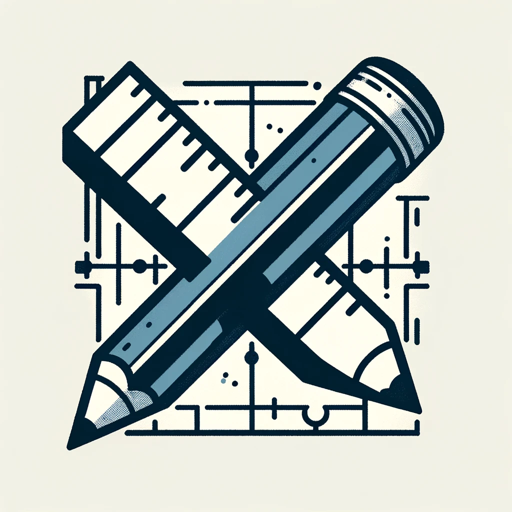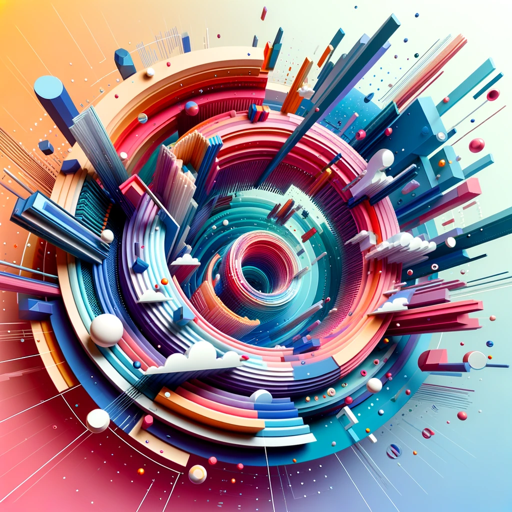建筑视觉-AI-based architectural visual generator.
AI-Powered Architectural Visualization Tool
建筑视觉 GPT 能干啥
描述第四代住宅并生图
扎哈风格的山海度假屋
描述火星城市并生图
Related Tools
Load More
Architecture AI
AI architect for designing beautiful buildings

視覺成像
才華洋溢的平面設計師或是具有美學堅持的數據科學家

architecture render engine gpt
Specializes in creating architectural renders using dall e

Interior Design Architect
For all types of interior spaces.

Architectural Renderings
Elevate your architectural visualization skills with expert AI guidance. Create stunning renderings that bring your designs to life. 🏗️🎨
Ai建筑设计
Architectural design visualization from text.
20.0 / 5 (200 votes)
Introduction to 建筑视觉
建筑视觉 is a specialized AI-powered tool designed to assist architects, designers, and visual artists in generating high-quality, detailed images and visualizations of architectural structures, interior spaces, and related environments. The tool is built to interpret and transform both textual descriptions and visual inputs into polished images that can be used for presentations, client proposals, and conceptual explorations. It leverages advanced AI to analyze and enhance details such as lighting, perspective, and material textures, ensuring the images it generates are not only realistic but also artistically appealing. For example, an architect might input a rough sketch of a building facade along with a description of the desired style (e.g., modern minimalist) and 建筑视觉 would generate a detailed visualization that highlights key architectural features, such as window layouts and facade materials.

Main Functions of 建筑视觉
Architectural Visualization
Example
An architect submits a sketch of a new residential building along with notes on the facade materials and lighting. 建筑视觉 generates a high-resolution, realistic image of the building, complete with accurate shadows, textures, and environmental context.
Scenario
This function is used in client presentations or to explore different design iterations during the planning stage, helping stakeholders visualize the final outcome.
Interior Space Rendering
Example
A designer inputs a floor plan and a description of the desired interior style, including furniture types and lighting preferences. 建筑视觉 produces a detailed rendering of the interior space, showcasing the design in a fully realized, photorealistic image.
Scenario
This is particularly useful for interior designers who need to present their ideas to clients or adjust designs based on client feedback before starting the actual work.
Artistic and Conceptual Visualizations
Example
An artist provides a concept sketch of a futuristic cityscape. 建筑视觉 generates an imaginative, high-detail image that captures the essence of the concept while enhancing elements like lighting effects and structural details.
Scenario
Artists and concept designers use this function to create visuals for storytelling, game design, or film production, where a blend of realism and creativity is required.
Ideal Users of 建筑视觉
Architects and Urban Planners
These professionals benefit from 建筑视觉 by using it to create detailed visualizations of their designs, allowing them to explore different architectural styles, materials, and lighting conditions. The tool helps in refining design concepts and communicating ideas effectively to clients and stakeholders.
Interior Designers and Decorators
Interior designers use 建筑视觉 to generate photorealistic renderings of interior spaces, helping them experiment with different layouts, color schemes, and furniture arrangements. The tool is ideal for visualizing the impact of design choices in real-world scenarios before execution.
Artists and Concept Designers
Artists and concept designers leverage 建筑视觉 for creating high-detail, imaginative visuals that blend realism with creativity. This user group benefits from the tool’s ability to turn abstract ideas into vivid, engaging images suitable for storytelling, game design, and other creative industries.

How to Use 建筑视觉
Visit aichatonline.org for a free trial
Start by visiting aichatonline.org where you can try 建筑视觉 without the need to log in or have a ChatGPT Plus subscription.
Upload or Describe Your Visual Input
You can either upload an image (e.g., architectural design, sketch) or provide a detailed text description. The system will analyze and process the input accordingly.
Review the Automated Analysis
The tool automatically breaks down the image or description into key components like composition, perspective, and light conditions. Review this analysis to ensure it aligns with your expectations.
Generate or Refine the Image
Use the insights from the analysis to generate a high-quality, detailed image. You can also refine the input or request specific adjustments to get the desired outcome.
Download and Implement
Once satisfied with the generated image, download it and use it in your architectural presentations, visualizations, or design projects.
Try other advanced and practical GPTs
Blog Master
AI-powered content creation made easy.

Diagram (UML/BPMN ) Creator
AI-powered diagram generation for professionals

Midjourney提示词小助手(Prompt Assistant)
AI-powered prompts for creative success.

Creative Ad Maker
Innovative Ads, Powered by AI
Pro Flashcard Maker
AI-Powered Flashcards for Optimal Learning.
RadAssist+
AI-powered insights for precise radiology.
Research Proposal Reviewer
AI-powered feedback for better research proposals.

GPT Português | Iniciar Sessão 🇧🇷 |🇵🇹
AI-powered Portuguese Language Assistant

GeneGPT
AI-powered tool for genetic insights.

LinkedIn Post Wizard
AI-Powered LinkedIn Post Creator
젠포트 팩터 가이드
AI-Powered Investment Strategy Tool

ImageWords AI
AI-Powered Image Descriptions & Keywords.

- Design
- Visualization
- Creativity
- Architecture
- Conceptualization
Detailed Q&A about 建筑视觉
What is 建筑视觉 primarily used for?
建筑视觉 is designed for creating detailed, high-quality architectural images from either text descriptions or uploaded sketches. It is ideal for architects, designers, and visual artists who need to visualize building designs and interiors.
How does 建筑视觉 handle different architectural styles?
The tool analyzes the uploaded images or text descriptions and adapts its generation process to fit various architectural styles, whether modern, classical, or industrial. It pays special attention to elements like window design, facade materials, and overall building proportions.
Can 建筑视觉 create images based on textual descriptions alone?
Yes, it can. You can provide a detailed description of the desired image, including elements like lighting, perspective, and architectural style, and the tool will generate a corresponding high-resolution image.
Is it possible to customize the generated images?
Absolutely. You can refine the input description or request adjustments after reviewing the initial image. This allows for a high degree of customization to meet specific project needs.
What types of images can 建筑视觉 generate?
It can generate a wide range of images, including exterior building visuals, interior spaces, landscape scenes, and even detailed window and facade analyses. The tool is versatile and can adapt to different visual and architectural requirements.